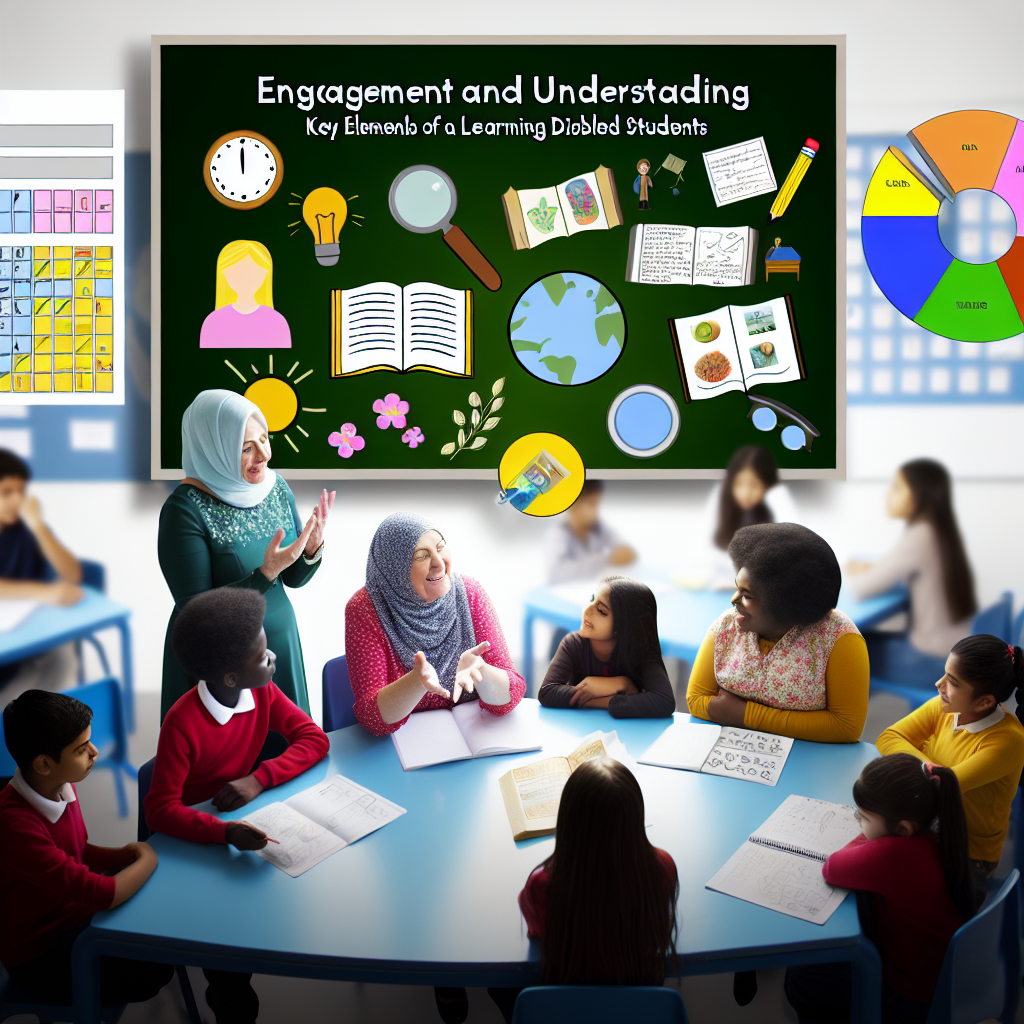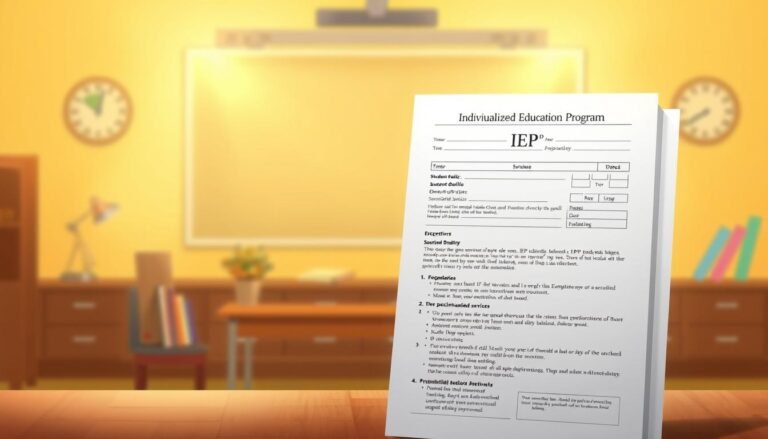
Engagement and Understanding: The Essential Elements of Lesson Plans for Learning Disabled Students
Introduction
In today’s diverse classrooms, the importance of tailored instruction for students with learning disabilities cannot be overstated. Traditional teaching methods often overlook the unique challenges these students face, leading to disengagement and frustration. This is where Engagement and Understanding: Key Elements of Lesson Plans for Learning Disabled Students come into play. By prioritizing engagement and fostering understanding, educators can create enriching learning experiences that resonate with these students, ultimately paving the way for their academic success.
The Importance of Engagement in Learning
Engagement is the heartbeat of effective learning. For students with learning disabilities, engagement can mean the difference between academic success and frustration. But what exactly does “engagement” look like in the context of lesson planning for learning disabled students?
What Constitutes Engagement?
Engagement involves more than just participation; it includes emotional, cognitive, and behavioral dimensions. For learning disabled students, the following aspects are particularly crucial:
- Emotional Engagement: Feelings of belonging and acceptance are vital. Creating a warm, inclusive classroom environment helps foster emotional safety.
- Cognitive Engagement: This aspect requires stimulating thought processes, encouraging students to think critically and creatively.
- Behavioral Engagement: Active participation is essential. Learning activities must capture their attention and motivate them to participate.
Strategies to Enhance Engagement
To effectively engage learning disabled students, some proven strategies include:
- Interactive Learning: Activities that require collaboration, such as group projects, can increase engagement.
- Choice and Autonomy: Allowing students to choose their learning paths can boost motivation and interest.
- Real-World Relevance: Connecting academic content to real-life situations makes learning more meaningful and engaging.
Case Study: The Power of Interactive Learning
Consider a classroom where students with dyslexia are struggling with reading comprehension. The teacher implements a "read-aloud circle," where students take turns reading sections of a book while visuals and hands-on activities accompany the text. This strategy not only increases emotional and cognitive engagement but also enhances understanding through collaborative effort.
Measuring Engagement: A Tool for Educators
Evaluating student engagement can be nuanced. A blend of qualitative and quantitative measures often works best. Educators can utilize surveys, observation, and self-assessments to gauge engagement levels.
| Measurement Tool | Description | Example Usage |
|---|---|---|
| Surveys | Anonymous questionnaires assessing student feelings of engagement. | End-of-lesson surveys |
| Observation Checklists | Teachers check for signs of engagement during activities. | Daily classroom observations |
| Self-Assessments | Students evaluate their own engagement and participation. | Weekly reflection journals |
Understanding: The foundation of Lessons
While engagement is critical, understanding is equally paramount. Understanding involves grasping concepts, making connections, and applying knowledge in various contexts. For learning disabled students, establishing a solid understanding is vital for their long-term academic success.
Key Elements of Understanding
- Simplified Instructions: Clear and concise directions help prevent confusion.
- Graphic Organizers: Visual aids can enhance comprehension by breaking down complex information.
- Scaffolding: Gradually increasing the difficulty of tasks promotes mastery of concepts, enabling students to thrive.
Strategies to Promote Understanding
Several strategies can enhance understanding among learning disabled students:
- Multi-Sensory Approaches: Using various senses to teach concepts (visual, auditory, kinesthetic) supports diverse learning needs.
- Repetition and Reinforcement: Regularly revisiting concepts can help reinforce understanding.
- Peer Tutoring: Pairing students can promote deeper understanding through discussion and collaboration.
Case Study: Multi-Sensory Learning in Action
A classroom faced with challenges in teaching math concepts to students with ADHD incorporated multi-sensory learning by using tactile materials like counting blocks, visual aids like charts, and auditory materials like math songs. This approach not only engaged the students but also deepened their understanding of mathematical concepts, significantly improving test scores.
Crafting Lesson Plans: Integrating Engagement and Understanding
Now that we’ve established the importance of both engagement and understanding, let’s delve into how to craft lesson plans that incorporate these key elements effectively.
Step-By-Step Process
- Identify Learning Objectives: What do you want your students to achieve?
- Assess Student Needs: Understand each student’s learning disabilities and tailor your approach.
- Select Engaging Activities: Incorporate multiple learning modalities and interactive tasks.
- Establish Clear Instructions: Ensure directions are straightforward and well-structured.
- Implement Assessments: Use formative assessments to gauge understanding and engagement.
Sample Lesson Plan Template
| Element | Description |
|---|---|
| Learning Objective | Students will understand the concept of fractions. |
| Materials Needed | Fraction circles, visual aids, worksheets |
| Engagement Activity | Interactive game where students create fractions with fruit pieces. |
| Instructional Strategies | Use graphic organizers to demonstrate fraction addition. |
| Understanding Assessment | Short quiz and group discussion to assess comprehension. |
Overcoming Challenges: Common Pitfalls in Lesson Planning
Despite best intentions, lesson plans may sometimes fall short in meeting the needs of learning disabled students. Awareness of common pitfalls can guide educators toward more effective instruction.
Pitfalls to Avoid
- One-Size-Fits-All Approach: Adapting lessons to fit individual needs is crucial.
- Neglecting Student Feedback: Ignoring the voices of students can lead to disengagement.
- Ambiguous Language: Clear, concise instructions are essential to avoid confusion.
A Case Study in Overcoming Pitfalls
In a high school setting, a teacher designed a unit on literature without acknowledging her students’ diverse reading levels. Consequently, many students struggled and became disengaged. After obtaining feedback, the teacher modified her lesson plan to include differentiated reading materials and fostered discussions at various levels. This transition not only engaged students but enhanced their overall understanding of the literature.
The Role of Technology in Fostering Engagement and Understanding
Incorporating technology into lesson plans can significantly elevate engagement and understanding among learning disabled students.
Tech Tools for Teachers
- Interactive Apps: Applications like Quizlet can facilitate learning through gamification.
- Video Lessons: Platforms like Khan Academy allow students to learn at their own pace.
- Collaborative Tools: Programs like Google Classroom enable peer collaboration and a sense of community.
Implementing Technology Effectively
To ensure tech tools are successful, teachers should:
- Provide training and support for students.
- Choose technology that aligns with lesson objectives.
- Monitor and adjust technology use based on student feedback and performance.
Conclusion
In summary, Engagement and Understanding: Key Elements of Lesson Plans for Learning Disabled Students are not mere buzzwords but essential components that shape effective learning experiences. By fostering emotional, cognitive, and behavioral engagement and focusing on understanding through tailored strategies, educators can significantly improve the educational outcomes of students with learning disabilities.
As we move forward, let us commit to creating inclusive educational environments that not only engage but also empower all learners. The journey toward understanding and engagement is challenging but rewarding, and by implementing these strategies, we can foster hope and success in every student.
FAQs
1. What are effective strategies for engaging learning disabled students?
Effective strategies include interactive learning, providing choices, and relating content to real-world situations.
2. How can I assess engagement in my classroom?
Use surveys, observation checklists, and self-assessments to gauge levels of engagement.
3. What role does technology play in fostering understanding?
Technology can enhance understanding through interactive tools, personalized learning platforms, and collaborative capabilities.
4. How often should I modify my lesson plans for learning disabled students?
Lesson plans should be revisited continuously based on student feedback and assessment results.
5. Can peer tutoring benefit students with learning disabilities?
Yes, peer tutoring fosters collaborative learning, aiding both engagement and understanding among students.
6. What are common mistakes to avoid when teaching learning disabled students?
Avoid using a one-size-fits-all strategy, neglecting student feedback, and implementing ambiguous language in instructions.
By focusing on these components, educators can create a transformative educational experience that supports all learners, especially those with learning disabilities.
















